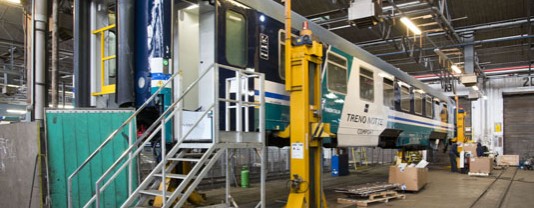Just a few weeks have gone by since the COP21 conference, organized by the United Nations Framework Convention on Climate Change, came to an end in Paris. The aim was to seal, for the first time after over 20 years of mediation, a binding and global agreement on climate change which, as we can see every day, is getting worse. The agreement reached envisages reducing greenhouse gas emissions to limit the rise in temperature of 1.5°C. Meanwhile the American NOAA (National Oceanic and Atmospheric Administration) and the British Met Office have just certified that the year 2015 was the hottest year since reliable records began, in other words, the hottest in 136 years. The average global temperature in 2015 was 14.79°C (58.62°F), 0.90 degrees higher than the average temperature of the 20th century and 0.16 degrees higher than the previous record set in 2014. In other words it is time to decide, and quickly, what kind of future we wish to guarantee the Earth and our future generations. Railway Engineering talks about transport and the railways have always been considered one of the most ecological ways of transporting freight and people. Despite this however, for a number of years the railway industry and railway undertakings have been involved in a continuous process of development which has the dual aim of reducing further still the impact rail transport has on the environment and to promote its use. This is the common thread running through the articles in this issue of Railway Engineering: topics apparently worlds apart but which in reality are all parts of the same jigsaw which when put together will create a railway which is even more environmentally- and earth-friendly. Alstom, one of the international sector giants reveals to us the secrets of its business activities, which for many years has included in its cornerstones the concept of sustainability achieved through advanced technologies and services which make it possible to better use natural resources and significantly reduce the emission of pollutants. Technology which is attentive to sustainability is also the topic running through the Technical Articles in this issue, dedicated to the study of energy consumed to run trains (research is also aiming to verify how much the driver’s driving style affects consumption) and the development, by Italferr, of a method for calculating greenhouse gas emissions in the engineering and construction of new railway infrastructures. Of just as much interest is the look into ticketing trends developed thanks to collaboration with Indra, one of the leading players in this sector. Making ticketing simple, and cheaper to manage, is one of the actions taken to bring new passengers onto the trains, along with making comfortable and modern rolling stock available. So we went and visited Trenitalia’s Cyclical Maintenance Workshops in Voghera where carriages are subject to periodical overhauls as well as updating and revamping operations. It is one of the main workshops in Italy operating in the maintenance sector, the complexity and importance of which escapes even many of the workers. Finally we have dedicated a special feature to the new appointments in top management of the Gruppo Ferrovie dello Stato Italiane (Italian State Railways Group) on the eve of what could be an historical change, with approximately 40% of the holding’s stock (currently 100% state-owned) due to be put on the market.
by Franco Tanel
